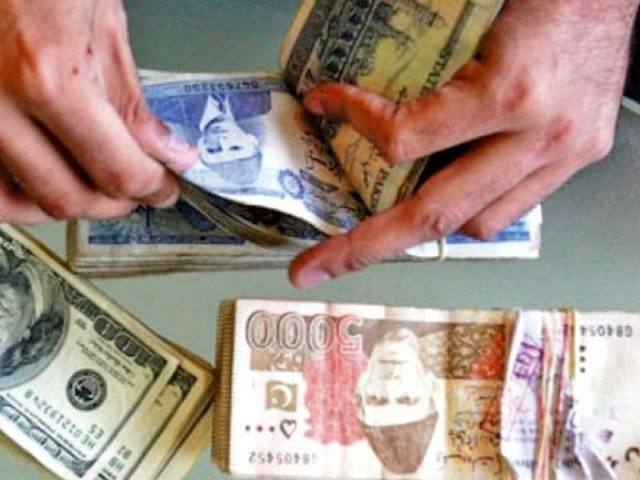Rupee continues to stay around 4-month high
Better performing economy expected to leave positive impact on currency

Pakistani currency has continued to hover around a four-month high - at slightly below Rs164 against the US dollar - for the past one week with better inflow of foreign currencies into the country compared to low demand for these currencies, mainly for imports and foreign debt repayment.
The rupee has been on an upward trajectory for the past two months since hitting the record low of Rs168.38 against the US dollar on July 10 in the interbank market. A further improvement in rupee value does not seem likely, nor could it lose substantial ground in the short run.
“The rupee peaked (at Rs163.72 on Thursday, October 8) and is expected to remain stable below Rs165 against the dollar till December,” Pakistan Kuwait Investment Company (PKIC) Head of Research and Development Samiullah Tariq projected while talking to The Express Tribune.
The rupee closed at Rs163.86 against the dollar in the interbank market on Tuesday. It was just Rs0.14 lower than the four-month high hit on Thursday.
Tariq said the International Monetary Fund (IMF) had given a good forecast for Pakistan’s economy as compared to India and major countries around the world. “The better performing national economy should leave a positive impact on the rupee going forward,” he said.
According to the IMF, Pakistan’s economy contracted just 0.4% compared to 10% for India and over 4% for the world in previous fiscal year 2019-20. Pakistan’s economy would improve 1% in the current fiscal year, he said.
Besides, Pakistan is expected to be taken out of the grey list and placed in the white list by the international financial transaction watchdog, the Financial Action Task Force (FATF), later this month.
“If these expectations materialise, then Pakistan should attract foreign investment in different sectors of the economy and this should also leave a positive impact on the currency,” he said.
Tariq added that the rupee-dollar parity was expected to remain stable mainly due to the receipt of healthy workers’ remittances of over $2 billion a month over the past four consecutive months (June-September). Besides, export earnings also improved in September.
Remittances were 31% higher during the July-September quarter contrary to expectations of international financial institutions and a credit rating agency, which saw a possible drop of 12-20% during the July-December 2020 period.
Moreover, demand for foreign currencies remained low due to the deferment of Pakistan’s debt payment worth almost $1.8 billion by G20 member countries till December and suspension of international flights in an effort to contain the Covid-19 pandemic, he said.
People could not travel to Saudi Arabia for Umrah and Hajj this year due to the disease. These are a big source of foreign currency spending outside Pakistan.
On the flip side, imports increased over 13% to $4.3 billion in September compared to $3.8 billion in the same month of last year.
“Imports will continue to increase with the surge in exports and improvement in demand for commodities in the domestic market going forward,” he said.
International oil prices are also likely to increase from the start of next calendar year. This will further increase the import bill of Pakistan as the nation heavily relies on imported energy supply.
It meets 70% of energy needs through imports, which cost around one-fourth of the annual import bill.
The rupee may gradually lose ground from the start of next year with expected increase in imports, surge in international oil prices and resumption of foreign debt repayment to G20 countries.
Published in The Express Tribune, October 14th, 2020.
Like Business on Facebook, follow @TribuneBiz on Twitter to stay informed and join in the conversation.



















COMMENTS
Comments are moderated and generally will be posted if they are on-topic and not abusive.
For more information, please see our Comments FAQ